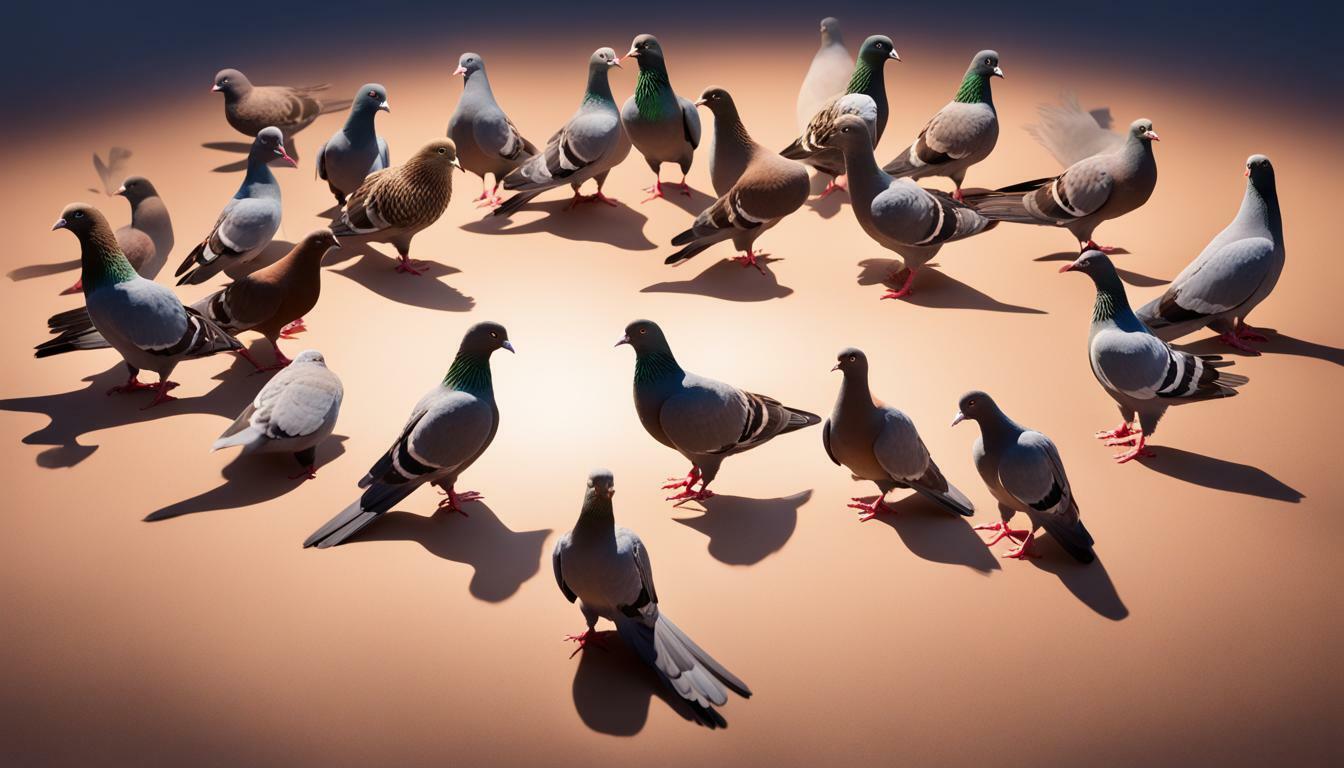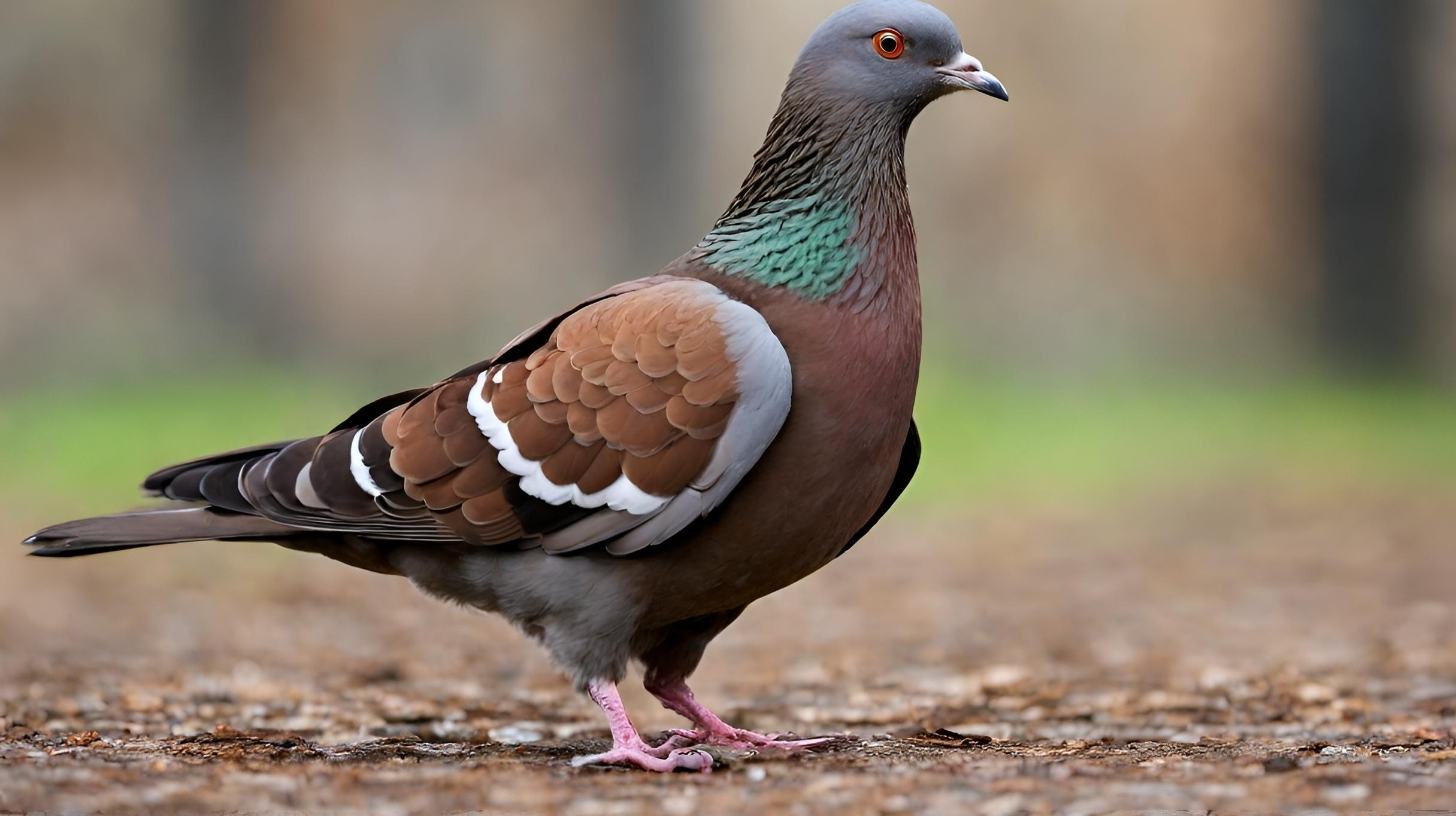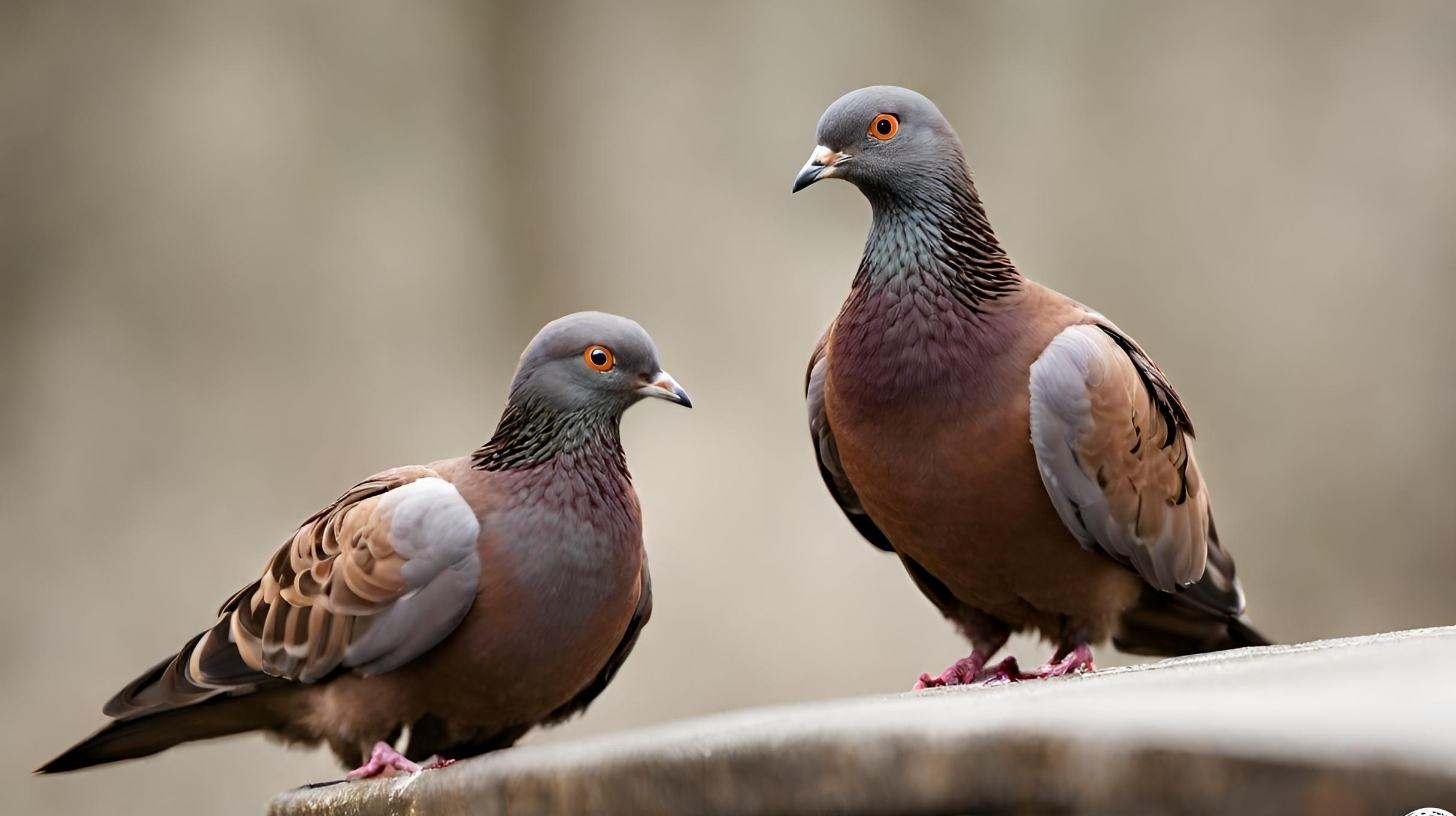Are Brown Pigeons Rare? Find Out Now!

Table of content:
- How Common Are Brown Pigeons?
- What Percentage of Pigeons Are Brown?
- Why Are Some Pigeons Brown While Others Are Gray?
- Do Brown Pigeons Have Any Special Traits?
- Where Are Brown Pigeons Most Common?
- Are Brown Pigeons a Separate Breed?
- How Do Brown Pigeons Interact with Grays?
- Do Brown Pigeons Have Different Diets?
- Is Brown Genetic in Pigeons?
- Are Populations of Brown Pigeons Increasing?
- Conclusion
Brown pigeons are a fairly common sight in many urban areas. However, some people are surprised when they spot a brown pigeon among the more typical gray ones. So are brown pigeons actually rare? Let’s take a closer look.
How Common Are Brown Pigeons?
The gray pigeon most of us are familiar with is scientifically known as the Rock Pigeon (Columba livia). This is the same species as the brown pigeon. Brown pigeons are simply a color variant of the Rock Pigeon.
Approximately 10-15% of wild Rock Pigeons are brown. So while not as common as gray individuals, brown pigeons are frequent enough that most bird watchers have spotted them before. Seeing a brown pigeon likely won’t be a rare sighting.
 What Percentage of Pigeons Are Brown?
What Percentage of Pigeons Are Brown?
As mentioned above, experts estimate that 10-15% of wild Rock Pigeons have brown plumage. The remaining 85-90% are the more familiar blue-gray color.
So in a large flock of pigeons, you could expect 1 in 10 birds to be brown. The exact percentage may vary by region, but 10-15% is a reasonable average on a global scale.
Why Are Some Pigeons Brown While Others Are Gray?
The gray versus brown coloration in pigeons is controlled by genetics. The specific gene involved is the Spread gene.
- The gray phenotype is caused by a dominant Spread gene (S).
- The brown phenotype is caused by two recessive alleles (ss).
So a pigeon needs two copies of the recessive allele to display brown plumage. If it inherits one dominant Spread allele, it will be gray.
Do Brown Pigeons Have Any Special Traits?
Brown and gray pigeons are the same species, so there are no major differences in their traits, abilities, or behavior.
A few subtle differences may exist:
- Brown pigeons may potentially be slightly more aggressive than grays. However, personality varies a great deal among individual birds.
- There are reports that brown pigeons are sometimes less likely to eat seed mixes compared to grays. But diet preferences can vary tremendously.
Overall though, brown vs. gray is simply a difference in pigmentation – not a true indicator of the bird’s traits or abilities.
Where Are Brown Pigeons Most Common?
Brown pigeons can be found living alongside gray pigeons worldwide. They don’t have any restrictions in terms of habitat or geography.
However, there are a few regions where larger populations of brown pigeons seem to exist:
- Some urban areas of Europe, such as London, appear to have higher than normal percentages of brown pigeons. Up to 50% of the pigeons may be brown morphs in these cities.
- Tropical islands like Mauritius and the Andaman Islands are home to nearly all brown pigeon flocks, with gray being quite rare.
So while brown pigeons live globally, some local populations have higher brown ratios for genetic reasons. Urban settings and islands can sometimes favor brown morphs.
 Are Brown Pigeons a Separate Breed?
Are Brown Pigeons a Separate Breed?
Brown pigeons are not a distinct breed – they belong to the same Rock Pigeon species as grays. The two color types frequently interbreed.
There are some rare fancy pigeon breeds that inherit brown plumage, such as German Nuns. But brown is not by itself a defining breed characteristic.
“Brown” simply describes a color morph, not a separate breed. Both brown and blue-gray pigeons are the same Columba livia species and share most traits.
How Do Brown Pigeons Interact with Grays?
Since brown and gray pigeons are the same species, they co-exist without issues. As discussed above, they do not differ significantly in habits, temperament, or requirements.
Key points about how browns and grays interact:
- Brown and gray pigeons intermingle freely in mixed flocks. No segregation or aggression exists based on color.
- They do not form separate mating groups – brown pigeons frequently mate with grays. The brown color trait is passed on recessively.
- Parents of mixed colorings may produce both gray and brown offspring in the same clutch.
- No obvious differences in social behaviors, feeding, or nesting habits exist between the color morphs. They coexist seamlessly.
In summary, brown and gray pigeons get along as expected of the same species. Their interactions are peaceful and integrated.
Do Brown Pigeons Have Different Diets?
No major dietary differences exist between brown and gray pigeons. As the same species, their nutritional requirements are identical.
Both typically consume:
- Seeds and grains
- Fruits and berries
- Green vegetation
- Insects
- Snails
- Scavenged human foods in urban settings
There are anecdotal reports that brown pigeons may be slightly less attracted than grays to seed mixes offered by bird lovers. But this could be coincidence.
In the wild, both color morphs appear to eat a similar omnivorous diet. Color does not strongly dictate feeding preferences.
Is Brown Genetic in Pigeons?
Yes, the inheritance of brown plumage in pigeons is controlled genetically by the Spread gene, as covered earlier.
To recap:
- The gray color is caused by a dominant Spread gene (S). Brown is recessive (ss).
- For a pigeon to display brown plumage, it must inherit two recessive alleles (one from each parent).
- When a brown pigeon mates with a gray pigeon, their offspring will typically be gray since gray is dominant. But they may carry the brown allele to pass on.
Brown is the assumed wild-type phenotype – gray pigeons originated as a color mutation. The original Rock Doves were mostly brown. Interestingly, artificial selection is now favoring gray pigeons, at least in urban feral populations.
Are Populations of Brown Pigeons Increasing?
Brown pigeon numbers seem to be declining overall compared to grays, especially in urban areas. For example, 150 years ago, London pigeons were predominantly brown. Today they are about 70% gray.
Reasons why gray pigeons are prevailing over brown include:
- Urban environments may favor lighter gray pigeons for camouflage. This gives them a selective advantage.
- Humans may intentionally select for gray pigeons by feeding them more often.
- In some cities, dark brown pigeons are preferentially culled since they resemble crows or ravens more than typical pigeons.
Despite their recent decline in cities, brown pigeons maintain stable wild populations in most regions. But grays are definitely becoming the urban norm.
Conclusion
While not as common as blue-gray pigeons, brown color variants are relatively frequent, making up 10-15% of Rock Pigeons in natural settings. They coexist seamlessly with gray morphs since they are the same species with no behavioral differences.
Though brown pigeons may be declining in cities, they continue to thrive in the wild across the world. So if you spot a brown pigeon, it’s not an extremely rare sight, but it’s still a fun diversion from the norm!
Welcome. I’m Adreena Shanum, the proud owner of this website, and I am incredibly passionate about animals, especially poultry. I founded adreenapets.com as a labor of love, stemming from my desire to share my knowledge and experiences with poultry enthusiasts worldwide.




